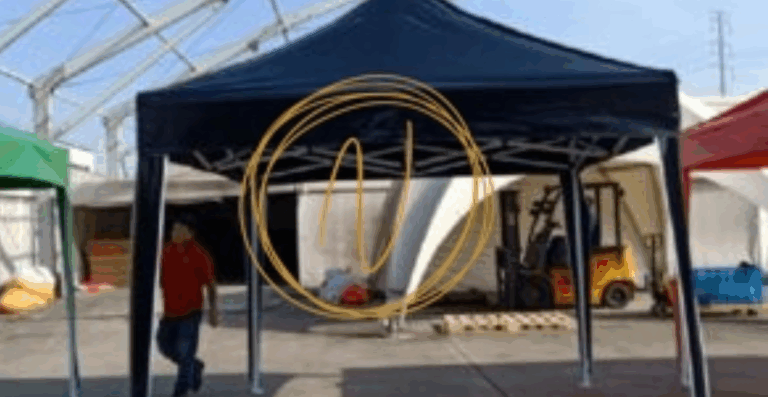Fire Retardant Safety Net: Essential Protection for Industrial and Construction Safety
In industries and construction sites where worker safety is a top priority, Fire Retardant Safety Net have become a crucial component of modern safety infrastructure. These nets not only provide fall protection but also help minimize fire hazards, making them a smart investment for workplaces dealing with high-risk environments. In this article, we will explore what a fire retardant safety net is, how it works, its advantages, applications, and why every project manager should consider using one.
What Is a Fire Retardant Safety Net?
A fire retardant safety net is a specially designed net made from high-strength synthetic fibers that have been treated or coated with fire-resistant materials. Unlike ordinary safety nets, these are capable of withstanding high temperatures and exposure to flames for a longer duration. Their main function is to protect workers and materials from accidents due to falls, while also ensuring safety in case of fire incidents.
These nets are tested according to industrial safety standards to ensure they can resist ignition and slow down the spread of flames. This helps prevent small fire outbreaks from turning into large-scale disasters, providing an additional layer of security on construction and industrial sites.
Why Fire Retardant Safety Nets Are Important
In many construction and industrial setups, sparks, welding operations, and electrical faults are common. Without proper preventive measures, these can quickly escalate into fire accidents. Here’s why a fire retardant safety net plays an essential role:
-
Dual Protection: It offers both fall protection and fire resistance.
-
Compliance with Safety Regulations: Many countries and organizations require fire-resistant materials on work sites for compliance.
-
Reduced Property Damage: Fire retardant nets minimize the spread of flames to nearby materials and structures.
-
Worker Safety Assurance: Workers feel more secure knowing they’re protected from both falls and potential fire hazards.
-
Long-Term Durability: Fire retardant materials are designed to withstand harsh weather and tough working conditions.
By integrating a fire retardant safety net into your site safety plan, you demonstrate a proactive approach toward employee welfare and regulatory compliance.
How Does a Fire Retardant Safety Net Work?
The working principle of a fire retardant safety net lies in its material composition. The fibers used are either inherently fire-resistant (such as certain treated polyamides and polyester compounds) or coated with flame-retardant chemicals. When exposed to fire, these materials react by forming a protective char layer that limits oxygen supply and slows down combustion.
Additionally, the net’s structure is designed to absorb impact, ensuring that in case of a fall, the energy is evenly distributed. This combination of mechanical strength and fire resistance makes it ideal for use in environments where both fall and fire risks coexist.
Key Features of Fire Retardant Safety Nets
Here are some common features you’ll find in a fire retardant safety net:
-
High Tensile Strength: Supports heavy loads and provides strong fall protection.
-
Heat and Flame Resistance: Designed to resist ignition and melting under high temperatures.
-
UV Stabilization: Prevents degradation when exposed to sunlight for long periods.
-
Chemical Resistance: Resists damage from oils, acids, and other industrial chemicals.
-
Easy Installation: Lightweight and flexible design allows quick setup on site.
-
Long Service Life: Built to endure harsh environmental conditions, reducing replacement frequency.
These features make fire retardant safety nets indispensable for industries where safety, durability, and reliability are non-negotiable.
Applications of Fire Retardant Safety Nets
A fire retardant safety net can be used in a wide range of applications, such as:
-
Construction Sites: To protect workers from falls and prevent fire hazards caused by welding sparks or electrical equipment.
-
Industrial Plants: Ideal for factories dealing with heat, furnaces, and chemical processes.
-
Warehouses: Helps safeguard workers and goods in storage areas where fire risks are present.
-
Shipyards: Provides safety to shipbuilders and welders working at heights and near combustible materials.
-
Event and Stage Setup: Used in public gatherings or stage setups to ensure safety against potential fire accidents.
-
Oil and Gas Industry: Prevents accidents in environments with flammable materials and gases.
No matter the industry, installing a fire retardant safety net ensures both compliance and peace of mind.
Choosing the Right Fire Retardant Safety Net
When selecting a fire retardant safety net, consider the following factors to ensure maximum protection and longevity:
-
Material Quality: Choose nets made from certified fire-resistant polymers.
-
Load Capacity: Verify the net’s tensile strength based on your site’s requirements.
-
Certification: Always ensure the product meets international safety standards like ISO, EN, or ASTM.
-
Mesh Size: Depending on the purpose, choose suitable mesh dimensions for optimal safety and ventilation.
-
Weather Resistance: For outdoor applications, the net should resist UV rays and moisture.
By carefully selecting the right fire retardant safety net, you can significantly enhance workplace safety while maintaining compliance with occupational safety norms.
Maintenance and Care Tips
Proper maintenance ensures the effectiveness of your fire retardant safety net over time. Here are a few simple tips:
-
Regular Inspection: Check for tears, burns, or weakened sections before every use.
-
Cleaning: Gently clean with mild soap and water—avoid using strong chemicals.
-
Storage: Store in a cool, dry place away from direct sunlight when not in use.
-
Replacement: Replace immediately if any signs of wear or damage are found.
Consistent care not only prolongs the life of your fire retardant safety net but also guarantees the highest level of protection at all times.
Benefits of Using Fire Retardant Safety Nets
The use of fire retardant safety nets brings numerous benefits to organizations and workers alike:
-
Improved Workplace Safety – Minimizes risks of fire and fall-related injuries.
-
Compliance with Standards – Meets occupational safety guidelines for high-risk environments.
-
Cost-Effective Solution – Reduces insurance and liability costs associated with workplace accidents.
-
Enhanced Productivity – Safe workers are more confident and efficient.
-
Brand Reputation – Demonstrates a company’s commitment to safety and professionalism.
When you invest in a fire retardant safety net, you’re not just buying equipment—you’re building a culture of safety.
Conclusion
In today’s fast-paced industrial and construction landscape, safety solutions must evolve beyond basic protection. A fire retardant safety net offers an intelligent, dual-purpose system that guards against both fire and fall hazards. By installing these nets, companies protect their workforce, ensure regulatory compliance, and prevent costly accidents.
Whether you’re managing a high-rise construction project, a manufacturing plant, or an oil facility, a fire retardant safety net is an essential safeguard for a safer, more secure workplace.







